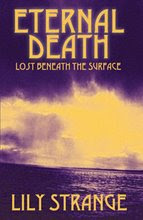Friday, June 20, 2008
How I beat the system: Living cheaply
I am a gourmet cook, I dont eat out
.
I dont drink SCOTCH, I used to drink FENI, home made booze
I dont wear perfumes
.
I dont buy branded shirts and trousers
I dont drink COKE, I drink nimbu pani
.
soaring gas prices dont affect me
I walk or catch a train
and I dont travel first class
.
I dont need to walk on a tread mill in a GYM
I walk on Gods earth
.
My girl friend is mature and beautiful, she dont need creams and perfumes. She knows I like her smell
.
I surf the net on my clients PC
I dont pay for netting
when I have to
I net on CYBER CAFE
its much cheaper at Rs 25 per hour
.
I used to drink much
Now I dont drink at all
.
I smoke a lott more than 2 packs a day
I had been suckered by the Malboro Man
I hope to kick the habit soon
.
I just smoked my last smoke
.
I dont need INSURANCE and CREDIT CARDS, coz I dont need much money. In case of emergency, my friends loan me money with out charging interest
I have been inspired by MKG
His simplicity began by renouncing the western lifestyle he was leading in South Africa. He called it "reducing himself to zero," which entailed giving up unnecessary expenditure, embracing a simple lifestyle and washing his own clothes.[34] On one occasion he returned the gifts bestowed to him from the natals for his diligent service to the community.[35]
Gandhi spent one day of each week in silence. He believed that abstaining from speaking brought him inner peace. This influence was drawn from the Hindu principles of mauna (Sanskrit:???? — silence) and shanti (Sanskrit:????? — peace). On such days he communicated with others by writing on paper. For three and a half years, from the age of 37, Gandhi refused to read newspapers, claiming that the tumultuous state of world affairs caused him more confusion than his own inner unrest.
After reading John Ruskin's Unto This Last, he decided to change his lifestyle and create a commune called Phoenix Settlement.
Upon returning to India from South Africa, where he had enjoyed a successful legal practice, he gave up wearing Western-style clothing, which he associated with wealth and success. He dressed to be accepted by the poorest person in India, advocating the use of homespun cloth (khadi). Gandhi and his followers adopted the practice of weaving their own clothes from thread they themselves spun, and encouraged others to do so. While Indian workers were often idle due to unemployment, they had often bought their clothing from industrial manufacturers owned by British interests. It was Gandhi's view that if Indians made their own clothes, it would deal an economic blow to the British establishment in India. Consequently, the spinning wheel was later incorporated into the flag of the Indian National Congress. He subsequently wore a dhoti for the rest of his life to express the simplicity of his life.
Saturday, June 14, 2008
Wednesday, June 11, 2008
HIV Children


Please tell your friends and family who can read Hindi to support and also people who would love to read Hindi- can also support this book :) and the kids.
http://www.dawnanddusk.org/
Author of this beautiful book, my dear friend from India said:
"As I have said this is my dream and publishing this book not only gives me an opportunity to give some thing back to the community but also fulfills my dream to help children".
Congratulations Dawn! I'm so happy that your dreams realized!
Please visit Dawn:
http://fizaa.blogspot.com/
Dawn said:
Yes 20% of the amount that I get from this book will be given to an Orphanage “International Child Welfare Service” in Chennai, India. They have many programs and one of them is called as “Dawn and Dusk Home, A Home for the HIV+ children”, - those kids who were born with it not because of their fault.
Great job Dawn!
Sunday, June 08, 2008
Thursday, June 05, 2008
WoodStock India, Goa !!!!!!!!!!!!!!!!!!!!!
Woodstock live videos

favorite hippy links





PLUS
A huge list of links for each performer at Woodstock









The first Hippie is said to have been a drop-out Jewish carpenter, named Jesus ("The Nazz") .He rebuked the state approved religious leaders of his time and instructed his disciples to sell what they had, give to the poor and follow him, preaching and teaching the good news of the Kingdom of Heaven. His disciples are a priesthood of believers (male and female) filled with the Holy Ghost (Spirit of Truth). It is not a popular message with the rich and powerful or those that want to be.
Psy-Trance is an absorbing form of repetitive beat music to which certain melodic and accoustic sounds are blended or are performed live in addition. Some of these sounds stem from exotic instruments, such as sittahs, gongs, drums and didgereedoos. Unlike other forms of techno music there is little by way of verbal addition, although some samples are derived from the human mouth. There are no songs or anthems (as with House) or repetitive speech elements (such as with Rap). Trance music is designed to increase and decrease in the higher frequencies in waves which ebb and flow, leading the dancer to repeated ecstatic peaks. To some it is a form of meditation. To some merely a way to work off a bit of winter fat. The dancers are extremely social and gentle with one another. If anyone else is accidentally touched or trodden upon there follow hearty apologies, or sometimes just a gesture, the palms pressed together in a prayer position, the traditional Indian greeting. Many Osho/Bhagwan followers (sanyassins) go to the parties and contribute their particular sexual and philosophical thinking to it. Osho advised certain dances as a form of meditation, as did Gurdgieff with his spiritual and ritualistic dances, drawn from the traditions of the whirling dervishes.
Dancing to trance is a very personal and individual experience. No advice is given or to be expected and experiences vary according to the background and outlook of the individual "trancer" him/herself. No common philosophy appears to exist amongst the dancers - most of the sayings, rituals and thinking at parties seems borrowed rather than adopted. Images of "Shiva" or "Krishna" may often be found in parties but most seem unaware as to what they actually are or what their significance is. These images are simply "used" to lend flavour to the party and not hallowed as something sacred. As is the use of tippees, totem poles, pyramids and runes. They merely provide atmosphere and carry no further meaning. Certain similarities in social approach can be perceived amongst the people and these are the hallmark of trance parties - the gentleness and respect, the chance to dance unmolested (this is especially noted by the women), the smiles and feelings of joy.
I have often been asked to describe the difference between a "rave" and a "trance party". Ravers dance to fast and furious beats until they are completely exhausted. Generally such parties are frequented by the younger set, teenage through early twenties, and are accompanied by a large consumption of chemicals which stimulate fast dancing such as "speed". Trancers, on the other hand, tend to be older on average, although a wide age range is common, from older teens to grandfathers. It's a question of outlook of the person. I know many 50-something trancers who dance as hard and as long as the younger ones, and bring a certain air of mysticism and experience to the party. Raves are generally organised by commercial undertakings and are advertised and reported on in the press and on TV and Radio. Trance parties are generally organised by ordinary people, a small group of DJs and helpers who expect little in remuneration and the parties are rarely advertised or reported upon in the press (some reports exhibit total surprise and call the scene "neo-hippy" or "techno" and attempt to compare it with things such as the Berlin "Love Parade" or even "Woodstock"). The Trance parties are therefore something special and wish to remain underground. They are a grass-roots welling-up of a new format for open air festivals. North Germans are indeed lucky to have so many such parties to choose from during their short but extremely colourful summer.
The elements of an open air trance party in Germany (in no particular order)1. Soundsystem with a surround (4 speaker) effect. Normally enlosed by circle of staves to determine the dance area proper. Sometimes this area is surrounded by a ring of tippees - which is popular.2. Some kind of booth, stage or shack where the DJs can spin without being bumped by dancers.3. A chillout area, offering carpeted areas under makeshift "tent" material (normally using brightly coloured indian/asian printed hangings and not very waterproof) complete with someone offering chai (spiced tea with ginger) and light snacks.4. An adequate carpark where the people can setup tents, barbecues or whatever they need to feel at a kind of home-from-home for the duration of the gathering.5. An assortment of private traders selling everything from imported asian fabrics and clothing, jewelery, records, tapes and CDs and the sort of stuff one finds in a headshop. Sometimes this is called the "hippy market" area, and can spread around a large area.6. A bar/tent (in Germany a lot of beer is drunk at any event, regardless of how spiritual the premises of the party). Sometimes there are alternative drinks available too such as "smart drinks" and guarana mixes from private traders.7. Trance-DJs, of course. Otherwise it wouldn't be a trance party.8. Lots of colour - particularly neon which glows under ultra violet light, of which there is always a lot too! The "deko" (decoration) of parties is often undertaken by struggling artists who paint large pictures on fabric specifically designed to be hung at a series of parties.9. Flyers are distributed in parties, also magazines such as the Mushroom and the KERNEL Goa Infoblatt.10. Of course there is also a lot of dancing too...
The Hippy Guy
Been a hippy since the sixties! That's right, and I figure that Jesus was a hippy. Long hair, beard, sandals. You know the type. And in the sixties they wouldn't have even let him into church looking that way. View my complete profile
The Jesus Movement
"Something's happening here and you don't know what it is, do you, Mr. Jones?" - Bob Dylan,
In the late 1960s, strange-looking beings with long, scraggly hair, blue jeans, colorful clothes and beads started showing up on the doorsteps of churches. Most of the churches were like Dylan's Mr. Jones. There was something happening but they didn't know what it was.
It was the "Jesus Movement." God was moving in an unexpected, unusual, and totally groovy way. The hippie counterculture that had brought us LSD, the "Summer of Love," "free love," Woodstock, and Altamont, was turning on to Jesus in large numbers. It was another one of the surprises God springs on His church from time to time!
It all started in 1967, when the "Living Room," the first Christian coffeehouse, was opened in San Francisco's Haight-Ashbury by some hippies who had discovered Jesus. The Word of God spread like wildfire among the "street people" who were trying all kinds of spirituality. Soon there were Christian coffeehouses, counseling centers, and communes all over California and the rest of the country, from Sunset Strip to Washington, DC.
Many churches saw that God was doing something and welcomed the "Jesus People." Pastor Chuck Smith was one of the first to welcome long-hairs and ex-dopers to his "little country church" in Orange County. Calvary Chapel became an epicenter of the Jesus movement earthquake. Many other churches, like the Church on the Way, Peninsula Bible Church in San Francisco, and Christ Church of Washington turned on to the Jesus Movement in a big way. Jesus people also spawned the Vineyard and scads of house churches and contributed to the growth of the charismatic renewal movement in mainline churches.
The Jesus people brought their music with them when they came to church. Larry Norman sang, "Why Should the Devil Have All the Good Music?" Drums, guitars, amplifiers and backbeats freaked out a lot of people who thought the organ was the only instrument God allowed in a church building. Jesus freaks took their rock'n'roll, rewrote the words, and went on the road to broadcast the gospel to the counterculture. By the early 1970's bands playing Christian music and sharing their testimonies were all over the place. Dudes like Larry Norman, Love Song, Second Chapter of Acts, Phil Keaggy, Randy Stonehill, the Resurrection Band, and countless others were playing coffeehouses, nightclubs, churches, and Jesus festivals.
By the early '70s, the movement had bubbled over and made its mark on pop culture. Dozens of books and magazine articles told the strange tale of how Jesus captured the hippies. Pop music started featuring spiritual themes--Jesus Christ Superstar, Godspell, "Spirit in the Sky", "Put Your Hand in the Hand of the Man from Galilee," "My Sweet Lord" were all hits. Larry Norman sang, "Last year we looked at Jesus from afar; this year He's a superstar" ("Readers Digest").
Jesus People also put their music to work in worshiping God. Guitars started showing up in Catholic "folk masses" in the 60s, and by the 70s they were a staple in Young Life and other youth group meetings. A whole canon of guitar-based worship songs started to come together, led by the Maranatha series. What a trip!
The Jesus Movement opened the way for all sorts of changes in the way we do church today. It spawned a whole "Contemporary Christian Music" genre. In most of today's churches, guitars, drums, big sound systems and worship choruses are in, and not many people even remember how to play an organ or sing in a choir. Worship services are more informal, "seeker-sensitive," and people are showing up at church in shorts and tennis shoes, trends that were all made possible by the Jesus Movement.
There is no character more openly despised by the mainstream of American culture than the "dirty hippy". All you have to do is check out one of the many websites directed against them to verify this observation right from your desktop.
Among Christians, the "dirty hippy" is often thought to be the anti-type of the follower of Christ. Lazy, unsuccessful, a slacker, a scoffer, a sinner who does drugs and has sex indiscriminately, someone who listens to the devil's rock and roll music; ask and many evangelical Christians will tell you: the hippy is hell-bound.
Now, when compared to hippies, we Christians have an image in America that is ultra clean cut. The image people have of us is shockingly like the T.V. show the The Simpsons' cartoon parody of the Christian, Ned Flanders. We are thought to be clean cut, gainfully employed, "clean" mouthed, simplemindedly gullible, little house-holders with nice fences and neat lawns. Christians are mostly known as law abiding, tax-paying, clean-living, moralistic, judgmental, suburban and rural people.
We do nothing to dispel these images; if anything, the American Christians are invisible, living comfortably in an increasingly homogeneous suburban culture, conforming ourselves in every respect to a life-style that demands a certain customary behavior pattern. In turn, we rigidly demand everyone's obedience to that same pattern of behavior. The "dirty hippy" just doesn't fit in, and why should he?
FREE online Back up

.
.
.
.
.
.
.
.
.
.
.
.
go here
What is Mozy?
Mozy is a simple, smart, and economical way to protect your data. You simply install it on your computer, set it up, and then never worry about data loss again.
Specifically, Mozy:
Is simple to set up
Performs backups automatically in the background
Encrypts all files on your computer before transfer
Performs incremental backups
Backs up only blocks that have changed
Backs up open/locked files
Try it out. It's a simple way to protect all of your data.
What platforms does MozyHome support?
MozyHome currently supports Windows Vista, XP, and 2000, preferably with NTFS. It is now also available for Mac OS X 10.4 and higher.
Most Windows Vista and XP users will be using NTFS, unless you upgraded from a previous version of Windows. If you are running Windows with a FAT32 file system, Mozy will be unable to back up any files that are opened or locked when the backup is run. Microsoft describes how to convert FAT32 partitions to NTFS here.
Windows Server 2003 and Windows 2000 Server are only supported with MozyPro, the professional version, at http://mozy.com/pro.
I have a small business. Can I back up my server for $4.95 per month?
MozyHome is for personal, non-commercial use only. If you are running a small or home-based business, please refer to http://mozypro.com/.
Note that aside from the terms of service, there really are some important differences between MozyHome and MozyPro: http://mozypro.com/mozy_pro/comparison.
Can I use MozyHome if I am behind an HTTPS proxy?
MozyHome does not have proxy support, which means that it needs direct outbound access through SSL port 443. If you need HTTPS proxy support, check out MozyPro at http://mozy.com/pro.
Is Mozy secure?
Yes. When you use Mozy, your files are encrypted on your computer using 448-bit Blowfish encryption and then transferred to the Mozy servers using 128-bit Secure Socket Layer (SSL) encryption. You have the option of using a Mozy key or your own private key to encrypt your data. Note that if you use your own private key, you must be very careful about not losing it because if you do, we won't be able to help. It's impossible for us to decrypt your data when you use your own key. Most users opt to use the Mozy key, but the choice is entirely yours.
I'm worried about privacy. How does Mozy respect my privacy?
The short answer is: We don't read your data or sell your information to anyone.
The long answer is in our privacy section.
Any suggestions on what I should back up?
Mozy has several suggestions about what you may want to back up in the Backup Sets tab of the client software itself. You can edit any of these existing backup sets to your liking. We generally recommend that you back up data that is difficult to replace, like photos, email, contacts, financial records, and office documents. You can also create your own custom backup sets based on rules that you create. The old fashioned method of selecting specific files and/or folders is an option as well.
Say something bad happens. How do I restore my data?
There are three ways to restore your data:
The first restore option is to simply right-click on the file or folder that you want to restore and select "Restore Previous Version." You can then select the version to restore, from the most recent version up to 30 days back.
The second restore option is to restore via the Mozy Virtual Drive. You can find this when you open up "My Computer" on your machine and select the Mozy icon from the "other" category.
The third restore option is to restore via the web. Go to the Restore page, login and select the computer and time/date you want to restore data from. Here, you are able to select all the data you want to restore.
The choice is then yours as to how you would prefer to receive your data. You can choose to retrieve your restore via download or, for a fee, have it shipped to you burned on DVD. Make your selection, and the restoration process will begin.
If you choose the free web restore, it could take a few minutes or a few hours for Mozy to prepare the data for you depending on how large the restore is. You will be notified by email when your restore is ready to download. When you get the email, go to your Account page and from there you can download your restored data.
How often can I restore my data?
As many times as you need to. MozyHome users are limited to one restore queued at a time, though multiple files may be requested within the restore.
What is backup, according to Mozy?
You can think of it in the same way you think of a backup copy of a paper document—that is, if you lose the working copy of the paper document, you go find the backup copy. In other words, the primary copy of your files or data will be maintained as the working copy on your machine.
If you delete the working copy on your machine and then run a backup, Mozy will assume that you no longer need a backup copy, since you got rid of the working copy, and will mark the file to be removed from our system in 30 days. (We keep it on file for 30 days, just in case you change your mind.) After 30 days, you cannot get these files back.
If you want Mozy to keep the files after they are deleted from your computer, this is referred to as an archiving service and is currently not offered. If you have suggestions for us on how you would like to see us implement an archiving service, email support@mozy.com
How can I view the status of my backup?
Double-click on the MozyHome tray icon and it will give you an idea of how your backup is progressing.
Are there any size limits or other constraints to the types of files I can back up?
You can back up pretty much any type or size of file. However, a few operating-system specific files can't be backed up, like the pagefile or prefetch files on Windows.
Can I share my backed-up data with another user?
No. Mozy is not a file sharing service—it's a backup service. While you can technically give your name and password to someone to access your backups, we strongly advise you not to share your password. (Unless, of course, you already share a toothbrush—then it's probably not a big deal to share a password.)
I use the free version of MozyHome, so what happens if I fill up my quota? Is there any way to get more?
If you are using the free version, MozyHome will stop backing up your data once you reach your quota and the MozyHome tray icon will be shown in error mode. You can fix this by opening your MozyHome client and deselecting some items so the amount of data you are backing up falls below your quota.
The easier thing is to upgrade to MozyHome Unlimited for just $4.95 per month here, and back up all of your home computer's data!
Another option is to participate in our referral program and increase your quota as your friends and family sign up for MozyHome.
How many files can I back up?
MozyHome Free accounts are restricted to 2 GB, but there’s no limit with MozyHome Unlimited. You can back up as many files as you can fit on your home computer. Just note that the more files you back up, the longer your initial backup will take. MozyPro even offers the capability of backing up network or mapped drives for more flexibility.
I have LOTS of data. How long will it take to back up?
For a typical system on a typical broadband line, Mozy backs up data at about 2-4 GB per day. But if left undisturbed on a fast connection, you can back up over 9 GB in a single day.
You may experience faster or slower speeds depending on your connection. You may want to check your favorite bandwidth meter test to measure your broadband connection. Here is one from Speakeasy that we like to use. You will be uploading to the Mozy servers when you back up, so pay attention to the "Upload" part of the test results.
Will it take that long next time?
Mozy does what are called differential backups, which means that it only backs up portions of your files that have changed since the last time they were backed up. This saves lots of time, bandwidth, and storage space. After your initial backup, subsequent backups are relatively quick, and chances are that you won't even notice them.
What if my internet connection disconnects while Mozy's backing up? Or what if I shut off my computer in the middle of the backup?
That's not a problem. Mozy will just continue where it left off next time you are online.
How do I cancel my Mozy account?
Uninstall the application from your desktop, and then log on to your account at Mozy.com. Under "My profile," select "delete account," and your account will be cancelled. All of your information will be completely deleted from Mozy's databases within 24 hours.
Will Mozy back up my entire disk drive? What about my applications and system files?
Mozy was made to back up your most important files (email, contacts, photos, financials, etc.), but not your system and application files, which are easy to restore via your original CDs.
Technically, you can back up your applications and system files, but we don't advise this. This is done for what's called a "bare metal restore," which is not what Mozy was designed to do. Typically, if your computer dies, you get new hardware, and attempting to just image your new computer with your old disk image via Mozy (or any other backup application for that matter) is a tricky endeavor. If you are ambitious, you are welcome to give it a shot, but it's not something we recommend or support.
How does Mozy keep my data from being lost?
We utilize a proprietary protection mechanism based on a complex encoding structure to ensure that your data is safe, even in the event of multiple hardware failures.
Does MozyHome support network drives? What about external drives?
MozyHome does not support network drives, but if the network drive is part of a server running Windows, then you can install Mozy onto that server and back up the shared drive locally. If the network drive is running on Windows Server 2003 or 2000, check out http://mozy.com/pro.
MozyHome does support most types of external drives (excluding thumbdrives), but only if Windows sees your external drive as "fixed."
Please note that if you unplug or turn off your drive while your computer is running, MozyHome will see that the files are gone and deselect them from your backup.
Choosing the right back up solution


































